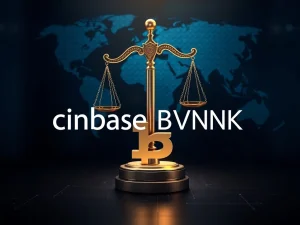Massive Leap: Tokenized Funds Hit $5.7B, Moody’s Report Shows

Have you heard about the incredible growth happening at the intersection of traditional finance and blockchain? According to a recent report from Moody’s, tokenized funds are experiencing a massive surge, now holding $5.7 billion in assets. This signals a significant shift in how investors, particularly large institutions, are looking at digital assets.
Understanding Tokenized Funds and Money Market Funds
So, what exactly are these tokenized funds that are capturing so much attention? Think of them as digital versions of traditional money market funds. They typically hold stable, low-risk assets like US Treasurys. The key difference is they use blockchain technology to represent ownership as digital tokens. This allows for fractional ownership and potentially faster settlement compared to traditional systems.
Traditional money market funds are huge, holding around $7 trillion in assets in the US alone as of late 2024. While tokenized funds are still a small fraction of this, their growth rate is impressive, climbing from virtually zero to $5.7 billion since 2021.
Driving Forces: Institutional Investment in Tokenization
Moody’s highlights growing interest from traditional finance players like asset managers, insurers, and brokerages. Why the sudden appeal? Institutional investment in tokenization is driven by several potential benefits:
- Improved Liquidity: Tokenization can make it easier and faster to move and settle assets.
- Operational Efficiency: Blockchain can streamline processes related to fund management and transfers.
- Compliance: While regulation is still evolving, the transparency of blockchain can aid in certain compliance aspects.
- Yield Optimization: For institutions holding stablecoins or large amounts of cash, tokenized funds offer a way to earn yield on those assets.
Experts anticipate that as more major financial platforms integrate digital assets, they will likely use products like tokenized short-term liquidity funds for managing uninvested cash, further boosting assets under management.
Who’s Leading the Charge in Blockchain Finance?
Several key players are dominating the tokenized funds space, pushing the boundaries of blockchain finance:
- BlackRock: Their USD Institutional Digital Liquidity Fund is a leader with $2.5 billion AUM.
- Franklin Templeton: Their OnChain US Government Money Fund holds a significant $700 million.
- Other notable players include Superstate, Ondo Finance, and Circle, each managing hundreds of millions.
Beyond funds, companies are exploring broader tokenization initiatives. German protocol Midas is offering tokenized US Treasury certificates to European investors with no minimums, democratizing access to government bond yields. Robinhood recently proposed a tokenization regulatory framework to the SEC, seeing it as a ‘new paradigm’ for asset allocation.
Navigating the Challenges of Tokenization
Despite the exciting growth and potential benefits, tokenized funds aren’t without risks. Besides the typical credit and liquidity risks of their underlying assets, they face vulnerabilities specific to blockchain technology and tokenization:
- Smart Contract Risks: Potential flaws in the code governing the tokens.
- Cybersecurity Threats: Risks of hacks or breaches affecting the blockchain or associated platforms.
- Network Issues: Reliance on blockchain network availability and performance.
- Regulatory Uncertainty: The legal and regulatory landscape for tokenized funds is still developing in many jurisdictions.
- Asset Representation Risks: Potential discrepancies between the digital blockchain record and traditional legal ownership records.
Conclusion: A Growing Force in Finance
The rapid ascent of tokenized funds to $5.7 billion, as highlighted by Moody’s, underscores a significant trend: the increasing convergence of traditional finance and blockchain. Driven by institutional investment seeking efficiency and new yield opportunities, this sector is poised for continued growth. While challenges related to technology and regulation remain, the momentum in tokenization suggests that digital representations of real-world assets are becoming an undeniable force in the future of finance.







